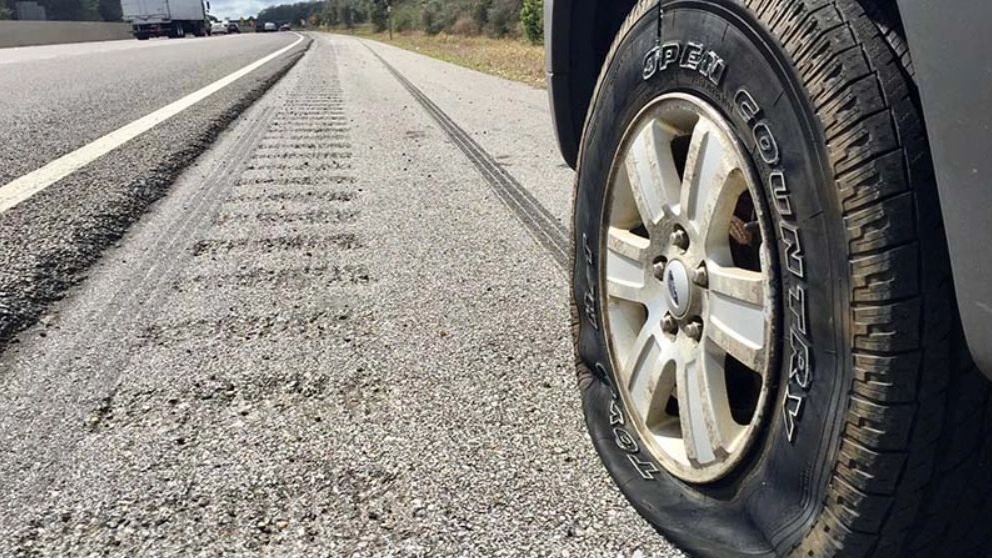Most flat tires are avoidable with good riding techniques and equipment selection. A flat tire can also usually be repaired in a matter of minutes.
Tires are a very important part of your car and ultimately, they are the only components that come into contact with the road surface. Since they are the link between your car and the asphalt, it is very important to keep your tires in good condition and make sure they are in safe and reliable condition. But what is the difference between flat tire and underinflated tire and the differences between flat tire and underinflated tire? .
Causes of low tire pressure
Tires and tires can lose about 1 Psi (1 pound per square inch) per month under normal conditions. Also, the air pressure of the tires can decrease by 1 Psi for every 5 degrees centigrade decrease in the ambient temperature. Or tire collar
In comparing tires, if it has 10Psi less air pressure, it is not detectable, so a good tire pressure gauge should be used to read the tire pressure accurately. To know the permissible air pressure of your tires, you should refer to the list on the label installed in the car door frame or the vehicle manual.
Low tire
It's definitely worth knowing what to look out for if you have under-inflated tires. If you are not familiar with the symptoms of low tire inflation, refer to the article we wrote about this. As the name suggests, underinflated tires mean that your car's tires gradually lose pressure over time, meaning you can drive many miles before you notice a problem. .
Also, if you do not notice that one of your car's tires has an air leak, you will be more likely to have a severe accident in the future. Drive too long with an under-inflated tire, and you could be at risk of a major tire failure that could endanger the safety of you, your passengers, and others on the road.
There are early warning signs that It can alert you to a puncture problem. While you are driving your car, it may drift to the left or right side of the road with a flat tire, and you may also hear the typical ticking sound that is caused by a puncture and an underinflated tire caused by a piece of debris. It is stuck in the tire.
What to do with low-inflated tires?
If you have an under-inflated tire, it's best to see if a local garage and tire fitment service is possible and get it fixed as soon as possible. Driving with an underinflated tire for longer than necessary is dangerous because the more you use the tire, the more likely it is to completely blow the tire.
The usual culprit for a puncture is debris that punctures the tire. Have. If it is a nail or screw that has gone through the tire tread (the flat part of the tire that is in contact with the road), then the tire can be repaired with a rubber plug that the repair shop can put in.
However, if the damage done to a tire is high, this type of repair may not be possible because some tire speed ratings are not recommended for repair due to higher stresses.
If the damage is to the sidewall of the tire, it cannot be repaired regardless of the type of tire. This damage will be to the main structure of the tire that supports the tread, thus weakening the tire, which will affect its proper performance.

flat tire
Another visual clue can be strange sidewall wear. If the tire is dirty and under-inflated, the sidewall is in contact with the asphalt, which cleans the tire and gives you a better visual clue of a slow puncture by creating a black wall that you can clearly identify. Another thing is a piece of garbage stuck in the tire itself. We're not saying you should get down on all fours to check the tire, but are there any screws or studs clearly embedded in the tread or outer wall? If it is in the tread and in contact with the road while driving, it should be easily detectable. Check carefully. Our tests have shown which are the best, and if you buy a foot pump or an automatic tire inflator, you should be able to easily see if the tire is losing pressure.
The difference between a flat tire and low wind
Another potential cause of slow punctures is wheel corrosion. If a steel wheel is rusted, it may cause cracks where the wheel parts are welded. In alloy wheels, corrosion is very different. If it is too severe, it can cause the metal in the wheel to become porous, allowing air to pass through the metal slowly. This is an extreme case, but it is also common in cars with magnesium alloy wheels because magnesium is naturally porous.

